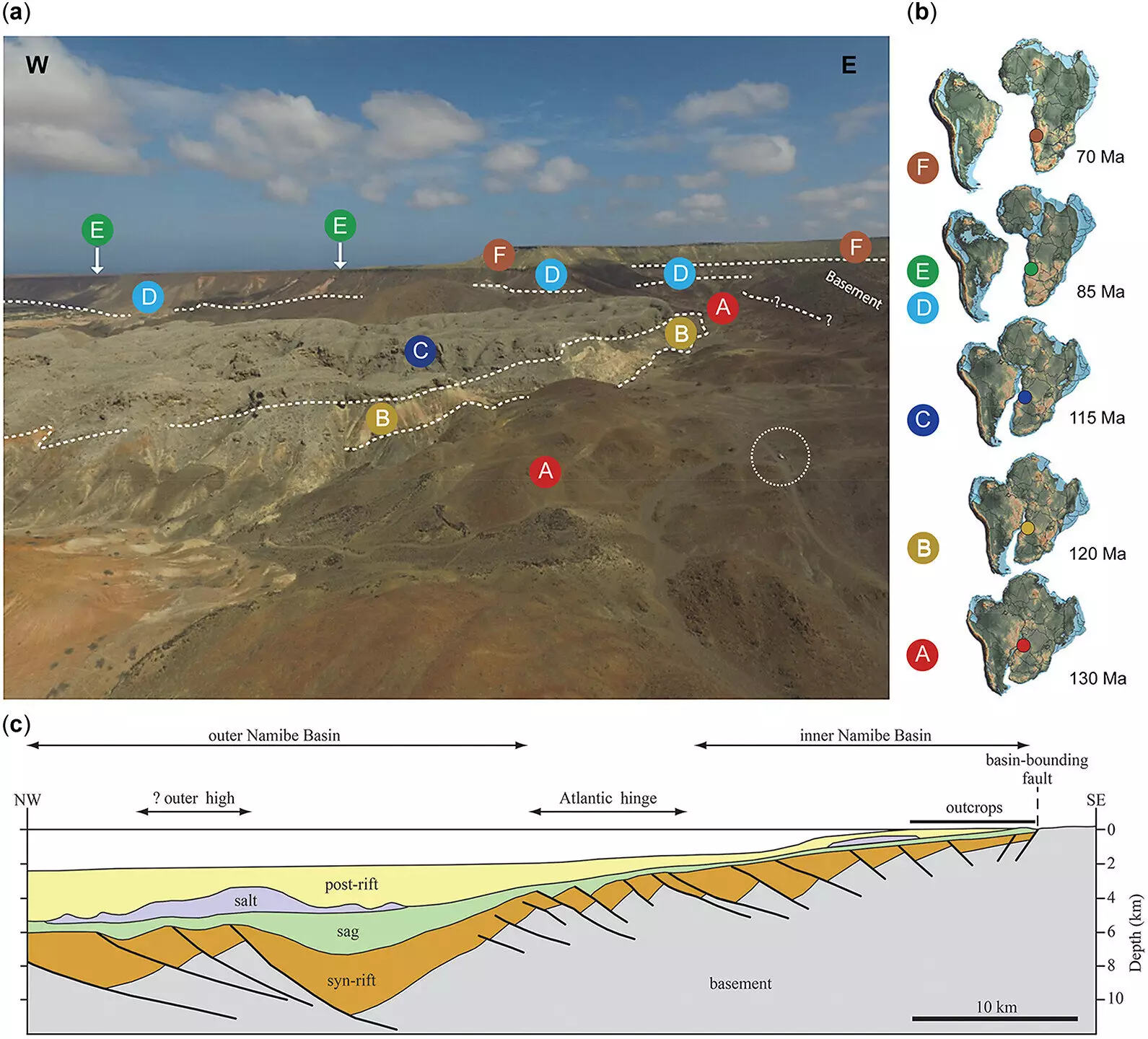The research conducted by an SMU-led team in Angola has unveiled crucial evidence of the splitting of South America and Africa, leading to the formation of the South Atlantic Ocean. This discovery sheds light on a significant chapter in Earth’s history, providing a remarkable glimpse into the past. The juxtaposition of ancient rocks and fossils from long-extinct marine reptiles in Angola paints a vivid picture of the separation of these two continents and the subsequent oceanic expansion.
The western coast of Africa and the eastern coast of South America were once united in the supercontinent Gondwana, which eventually parted ways from the larger landmass of Pangea. The geological record found in the southern coast of Angola offers a comprehensive look at the gradual movement of the continents, dating back from 130 million years ago to 71 million years ago. This area in Angola stands out as a unique site that showcases the entire process of the separation and opening of the South Atlantic Ocean unlike any other location on land.
Comprehensive Geological Insight
Angola presents an unparalleled opportunity for researchers and enthusiasts alike to walk through each phase of this significant geological transformation. The detailed rock formations found in various locations along the coast offer a tangible representation of the Earth’s evolution. By studying the different types of sediments, volcanic outpourings, faults, and marine fossils, the research team has pieced together a coherent narrative of the continental drift and oceanic expansion that shaped the landscape we see today.
Interdisciplinary Collaboration
The collaboration between experts from paleontology, geology, and other related fields has been instrumental in unraveling the mysteries hidden within Angola’s ancient rocks and fossils. By analyzing the sedimentary layers, volcanic activity, and marine life present in the region, researchers have been able to reconstruct a timeline of events leading up to the formation of the South Atlantic Ocean. This interdisciplinary approach has allowed for a more holistic understanding of Earth’s geological past.
Scientific Significance and Display
The findings from this research have not only broadened our knowledge of Earth’s history but have also provided insights into the evolution of marine life during the Cretaceous Period. The fossils of large marine reptiles discovered in Angola underscore the flourishing biodiversity that existed in the ancient seas. Many of these ancient specimens are currently showcased at prestigious institutions such as the Smithsonian’s National Museum of Natural History, offering a glimpse into the prehistoric world of “Sea Monsters Unearthed: Life in Angola’s Ancient Seas.”
The involvement of Angolan researchers and geoscientists, such as Nair de Sousa and Pedro Claude Nsungani, has been pivotal in the success of this research endeavor. Their insights and expertise have enriched our understanding of the geological history of Angola and its significance in the larger context of continental drift and oceanic formation. This collaborative effort between international and local researchers highlights the global implications of studying Earth’s past and the importance of preserving these geological treasures for future generations.



Leave a Reply